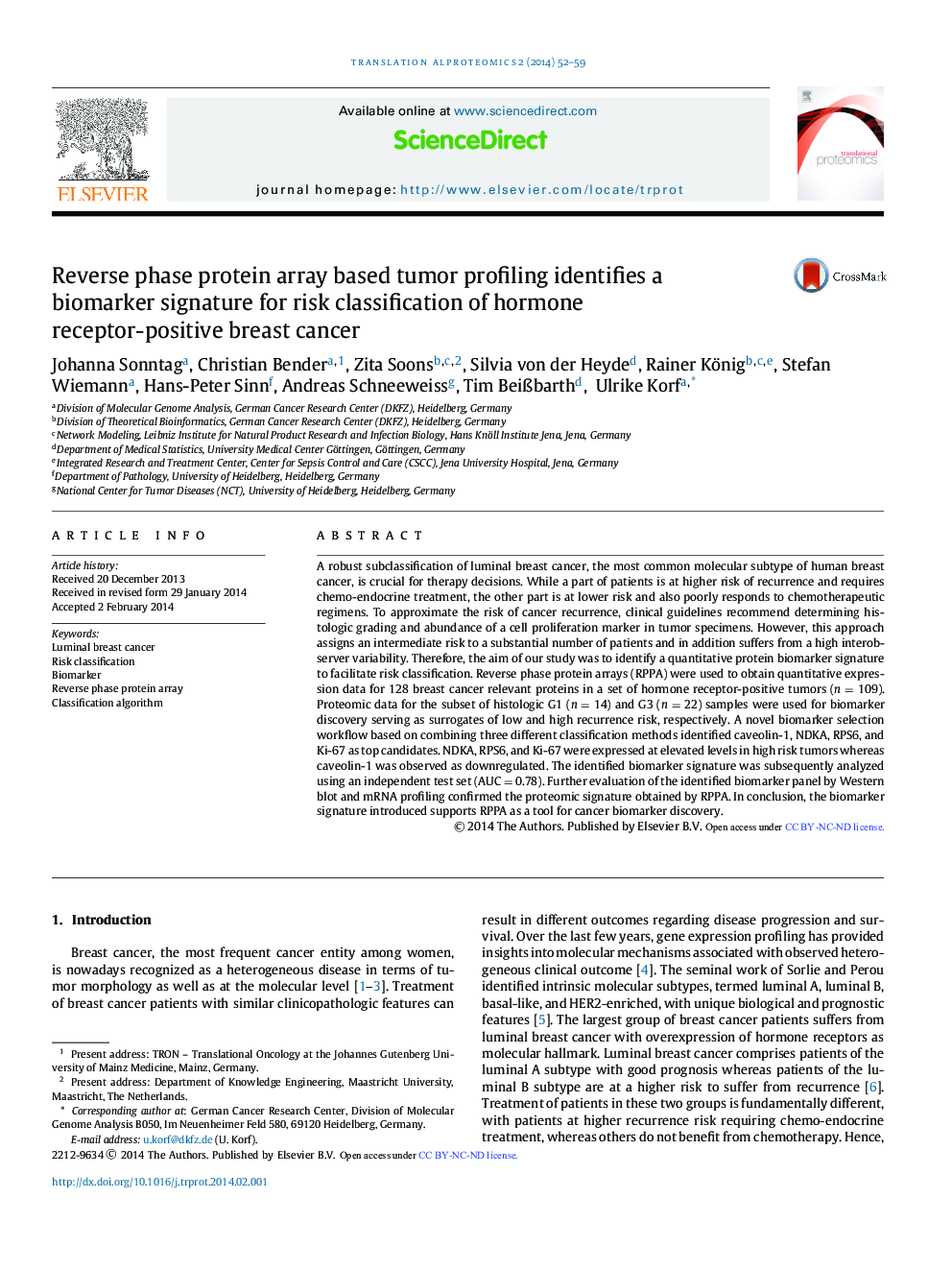| کد مقاله | کد نشریه | سال انتشار | مقاله انگلیسی | نسخه تمام متن |
|---|---|---|---|---|
| 2030451 | 1542776 | 2014 | 8 صفحه PDF | دانلود رایگان |
• Targeted proteomics using reverse phase protein arrays (RPPA).
• New biomarker selection workflow.
• Biomarker signature to assess recurrence risk of luminal breast cancer.
• Biomarker signature confirmed using independent test set (AUC = 0.78).
A robust subclassification of luminal breast cancer, the most common molecular subtype of human breast cancer, is crucial for therapy decisions. While a part of patients is at higher risk of recurrence and requires chemo-endocrine treatment, the other part is at lower risk and also poorly responds to chemotherapeutic regimens. To approximate the risk of cancer recurrence, clinical guidelines recommend determining histologic grading and abundance of a cell proliferation marker in tumor specimens. However, this approach assigns an intermediate risk to a substantial number of patients and in addition suffers from a high interobserver variability. Therefore, the aim of our study was to identify a quantitative protein biomarker signature to facilitate risk classification. Reverse phase protein arrays (RPPA) were used to obtain quantitative expression data for 128 breast cancer relevant proteins in a set of hormone receptor-positive tumors (n = 109). Proteomic data for the subset of histologic G1 (n = 14) and G3 (n = 22) samples were used for biomarker discovery serving as surrogates of low and high recurrence risk, respectively. A novel biomarker selection workflow based on combining three different classification methods identified caveolin-1, NDKA, RPS6, and Ki-67 as top candidates. NDKA, RPS6, and Ki-67 were expressed at elevated levels in high risk tumors whereas caveolin-1 was observed as downregulated. The identified biomarker signature was subsequently analyzed using an independent test set (AUC = 0.78). Further evaluation of the identified biomarker panel by Western blot and mRNA profiling confirmed the proteomic signature obtained by RPPA. In conclusion, the biomarker signature introduced supports RPPA as a tool for cancer biomarker discovery.
Figure optionsDownload as PowerPoint slide
Journal: Translational Proteomics - Volume 2, March 2014, Pages 52–59
